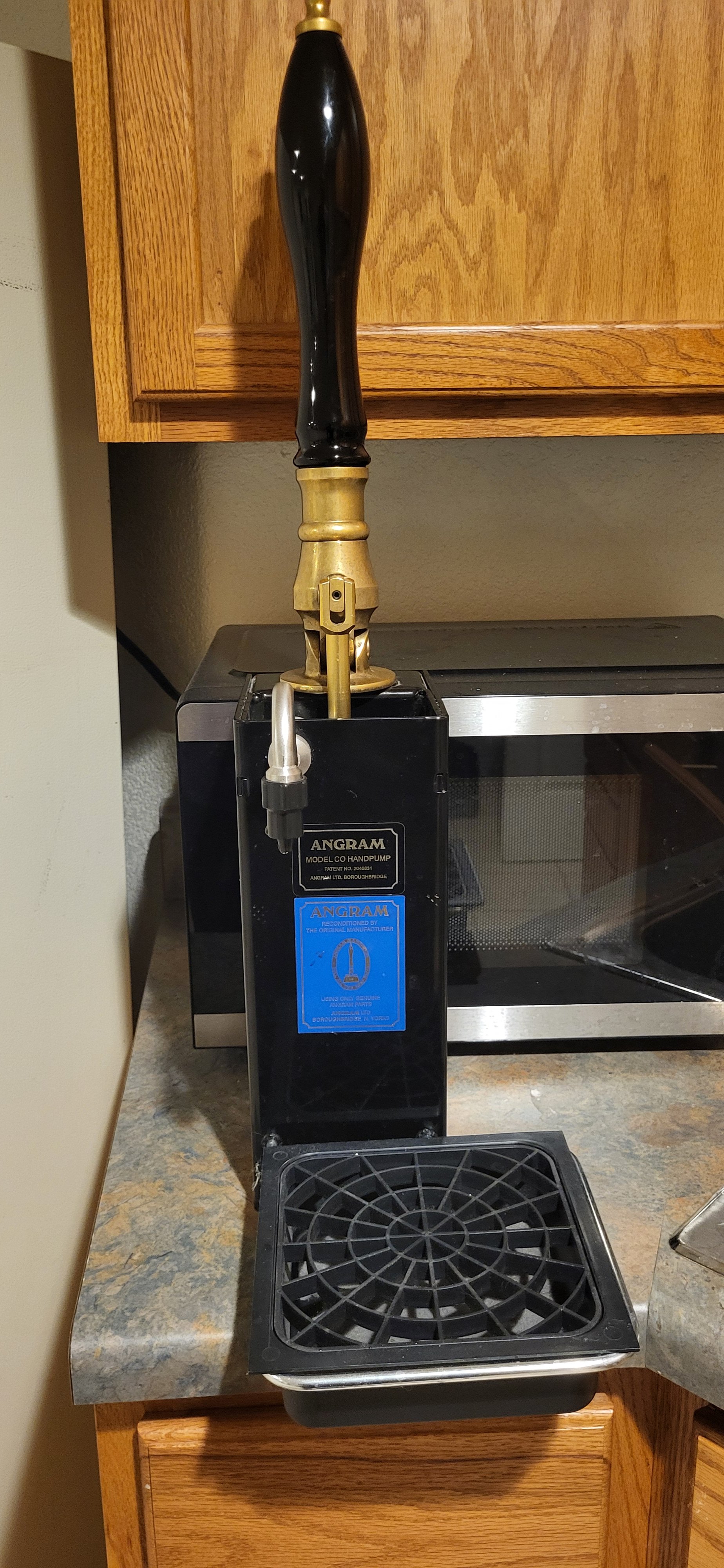@Cheshire Cat : How many tries until you nailed it?
You are using an out of date browser. It may not display this or other websites correctly.
You should upgrade or use an alternative browser.
You should upgrade or use an alternative browser.
English Ales - What's your favorite recipe?
- Thread starter Puddlethumper
- Start date
-
- Tags
- recipe

Help Support Homebrew Talk:
This site may earn a commission from merchant affiliate
links, including eBay, Amazon, and others.
Just once about 6 months ago and it was good. I make Five Points and Sussex regularly and make my other favourites perhaps once a year.@Cheshire Cat : How many tries until you nailed it?
The Five points clone is great, noticed they changed medium crystal from the Craft beer channel recipe to Light crystal now on the Five points website.
I use Crisp Extra Light CrystalThe Five points clone is great, noticed they changed medium crystal from the Craft beer channel recipe to Light crystal now on the Five points website.
I’ve been trying to research my alternatives to “Essex” (or more specifically derivatives of Ridleys) - at least those available in the USA.Well I can forget Real Brewers Yeast (RBY) - they seem like a defunct company after trying to reach them a few times. I guess I either risk ordering some Essex yeast from the UK (and the summer heat of DHL planes and vans) or wait for White Labs to do their seasonal release (guessing December?). Or, since I have the hops I suppose I could try some London yeast. What’s a few miles up the River Thames…
In reading about that Ridleys yeast I saw my old two local breweries mentioned a lot - Tolly Cobbold and Greene King. I used to love one of these
See a lot of mentions for 1469 Yorkshire - but I’ve used this a number of times and don’t think it’s that similar. Others mention 1098 London but that has very different numbers - I can’t recall the beers profiles I made with it. Someone brewed a Crouch Vale Brewers Gold with Imperial A07 - I am only familiar with A09.
Yesterday I found a used Anvil 10.5 so now have two (trying to increase capacity slowly and this seemed more functional than getting an Anvil 18, BZ 65 or even 100L). Thinking about doing two batches with different two yeasts - same SMASH recipe. Got to pick the two yeast candidates…
Colindo
Well-Known Member
Sorry about the late reply, only returned today from a holiday in Brittany, France. M15 is maltotriose negative and tastes to me similar to S-33. Its flocculation is a nightmare, like all maltotriose negative yeasts. I have not yet figured out why or how to improve it. Most yeasts start precipitation once food goes out, so maybe those yeasts that don't eat maltotriose still see it floating around and think there's still some leftovers...Any opinion on mangrove Jack’s M 15 dry yeast for an English brown ale
By the way, there is Cask Ale in Brittany and it tastes bloody amazing:
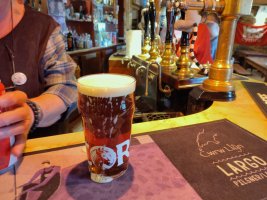
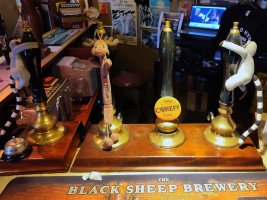
Also a local nitro stout:
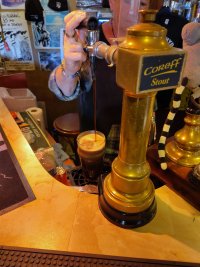
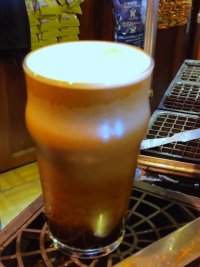
More info here: https://www.pelliclemag.com/home/20...tic-soul-of-tavern-ty-lise-in-brittany-france

$172.35
2 Inch Tri Clamp Keg Manifold With Ball Lock Posts, Pressure Gauge, PRV (0-30 PSI) – Homebrew, Fermentation, Kegging System
wuhanshijiayangzhiyimaoyiyouxiangongsi
![Craft A Brew - Safale S-04 Dry Yeast - Fermentis - English Ale Dry Yeast - For English and American Ales and Hard Apple Ciders - Ingredients for Home Brewing - Beer Making Supplies - [1 Pack]](https://m.media-amazon.com/images/I/41fVGNh6JfL._SL500_.jpg)
$6.95 ($17.38 / Ounce)
$7.47 ($18.68 / Ounce)
Craft A Brew - Safale S-04 Dry Yeast - Fermentis - English Ale Dry Yeast - For English and American Ales and Hard Apple Ciders - Ingredients for Home Brewing - Beer Making Supplies - [1 Pack]
Hobby Homebrew

$22.00 ($623.23 / Ounce)
AMZLMPKNTW Ball Lock Sample Faucet 30cm Reinforced Silicone Hose Secondary Fermentation Homebrew Kegging joyful
无为中南商贸有限公司

$53.24
1pc Hose Barb/MFL 1.5" Tri Clamp to Ball Lock Post Liquid Gas Homebrew Kegging Fermentation Parts Brewer Hardware SUS304(Liquid Hose Barb)
yunchengshiyanhuqucuichendianzishangwuyouxiangongsi

$7.79 ($7.79 / Count)
Craft A Brew - LalBrew Voss™ - Kveik Ale Yeast - For Craft Lagers - Ingredients for Home Brewing - Beer Making Supplies - (1 Pack)
Craft a Brew

$176.97
1pc Commercial Keg Manifold 2" Tri Clamp,Ball Lock Tapping Head,Pressure Gauge/Adjustable PRV for Kegging,Fermentation Control
hanhanbaihuoxiaoshoudian

$53.24
1pc Hose Barb/MFL 1.5" Tri Clamp to Ball Lock Post Liquid Gas Homebrew Kegging Fermentation Parts Brewer Hardware SUS304(Gas MFL)
Guangshui Weilu You Trading Co., Ltd

$33.99 ($17.00 / Count)
$41.99 ($21.00 / Count)
2 Pack 1 Gallon Large Fermentation Jars with 3 Airlocks and 2 SCREW Lids(100% Airtight Heavy Duty Lid w Silicone) - Wide Mouth Glass Jars w Scale Mark - Pickle Jars for Sauerkraut, Sourdough Starter
Qianfenie Direct

$58.16
HUIZHUGS Brewing Equipment Keg Ball Lock Faucet 30cm Reinforced Silicone Hose Secondary Fermentation Homebrew Kegging Brewing Equipment
xiangshuizhenzhanglingfengshop

$56.70
Wilbur Curtis Thermal Dispenser Seamless Pourpot, 64 Oz, Ss Exterior/Liner, Brew-Thru Lid - Commercial Airpot Pourpot Beverage Dispenser - CLXP6401S100 (Each)
BEACON HILL ( ALL Serial NUMBERS recorded)

$10.99 ($31.16 / Ounce)
Hornindal Kveik Yeast for Homebrewing - Mead, Cider, Wine, Beer - 10g Packet - Saccharomyces Cerevisiae - Sold by Shadowhive.com
Shadowhive

$20.94
$29.99
The Brew Your Own Big Book of Clone Recipes: Featuring 300 Homebrew Recipes from Your Favorite Breweries
Amazon.com
I'd certainly drink that too!Sorry about the late reply, only returned today from a holiday in Brittany, France. M15 is maltotriose negative and tastes to me similar to S-33. Its flocculation is a nightmare, like all maltotriose negative yeasts. I have not yet figured out why or how to improve it. Most yeasts start precipitation once food goes out, so maybe those yeasts that don't eat maltotriose still see it floating around and think there's still some leftovers...
By the way, there is Cask Ale in Brittany and it tastes bloody amazing:
View attachment 881482View attachment 881483
Also a local nitro stout:
View attachment 881484View attachment 881485
More info here: https://www.pelliclemag.com/home/20...tic-soul-of-tavern-ty-lise-in-brittany-france
The ironing board!!
Can I follow you somewhere for more marriage tips?The ironing board!!
- Joined
- Nov 26, 2013
- Messages
- 9,937
- Reaction score
- 24,144
First you go grab yourself a random piece of figured walnut, about 20 feet long, maybe live edge, highly polished, and you build yourself a small room around it that will hold, say, you and 36 of your best friends...need to figure out what to mount it to when you don't have a bar?
Decent advice!First you go grab yourself a random piece of figured walnut, about 20 feet long, maybe live edge, highly polished, and you build yourself a small room around it that will hold, say, you and 36 of your best friends...
worlddivides
Well-Known Member
So I'm going to be brewing a British brown ale pretty soon. The only thing that's up in the air is the yeast. I've probably brewed more than 10 British brown ales by now, but the yeasts I've used in the past have been: WLP002, S-04, and 1098. I've used a ton of other English ale yeasts on stouts, porters, bitters, English IPAs, and so on, but most of my brown ales have been S-04 with WLP002 on a few and 1098 on just one.
I was planning on just using S-04 since it's my go-to for stouts, porters and, by connection, brown ales, but I thought of using one of the other English dry yeasts I have: Windsor, Nottingham, Verdant, or just going with S-04 like usual. The grain bill, gravity, IBU, and so on is more of a Northern English style, but I'm kind of leaning towards using Windsor (which I last used in 2016, I think).
I was planning on just using S-04 since it's my go-to for stouts, porters and, by connection, brown ales, but I thought of using one of the other English dry yeasts I have: Windsor, Nottingham, Verdant, or just going with S-04 like usual. The grain bill, gravity, IBU, and so on is more of a Northern English style, but I'm kind of leaning towards using Windsor (which I last used in 2016, I think).
I wouldn't think verdant would be to style.
I've not had good experience with Windsor, your FG with it will be high. If that suits your style then it's perfect.
I've not had good experience with Windsor, your FG with it will be high. If that suits your style then it's perfect.
worlddivides
Well-Known Member
I also don't think Verdant would be to style, but I know there are a lot of people who have used London Ale III in brown ales, and Verdant is closely related to it. And there are some proponents of using Verdant in traditional English ales, though I've personally only ever used it in the more common usage: hazy IPAs.I wouldn't think verdant would be to style.
I've not had good experience with Windsor, your FG with it will be high. If that suits your style then it's perfect.
I've had good experience with Windsor, but it's only been in extremely malty styles or in co-pitches (such as where I fermented with Windsor before adding lactobacillus, pediococcus, Brettanomyces, and so on). I've heard a lot of people like to co-pitch Windsor and Nottingham. Never done it myself, but I'm guessing it's to get the esters from Windsor but the attenuation of Nottingham.
I do think Windsor could be a bit too high of an FG, even if I mash lower than I've been planning, considering the crystal and chocolate. If I don't use the Windsor here, I'll probably use it on a dark mild sometime in the future.
But the key question is what yeast I should use, not which one I shouldn't. Should I just use S-04 like I usually do?
If you are happy with it so far, use it. I would do so.I also don't think Verdant would be to style, but I know there are a lot of people who have used London Ale III in brown ales, and Verdant is closely related to it. And there are some proponents of using Verdant in traditional English ales, though I've personally only ever used it in the more common usage: hazy IPAs.
I've had good experience with Windsor, but it's only been in extremely malty styles or in co-pitches (such as where I fermented with Windsor before adding lactobacillus, pediococcus, Brettanomyces, and so on). I've heard a lot of people like to co-pitch Windsor and Nottingham. Never done it myself, but I'm guessing it's to get the esters from Windsor but the attenuation of Nottingham.
I do think Windsor could be a bit too high of an FG, even if I mash lower than I've been planning, considering the crystal and chocolate. If I don't use the Windsor here, I'll probably use it on a dark mild sometime in the future.
But the key question is what yeast I should use, not which one I shouldn't. Should I just use S-04 like I usually do?
You could try Nottingham, the result will be fairly similar to s04 though. Maybe a tad bit more attenuation with the exact same recipe. I like both, so it's a coin flip for me if you want to try something new, use notti. It will be clean and relatively dry. It's a great yeast, but so is s04 as well.
worlddivides
Well-Known Member
Thanks. Notty would be new for me in a brown ale. I've used it in English IPAs and Russian Imperial Stouts before. And it does get pretty dry. That wouldn't be bad here, though.If you are happy with it so far, use it. I would do so.
You could try Nottingham, the result will be fairly similar to s04 though. Maybe a tad bit more attenuation with the exact same recipe. I like both, so it's a coin flip for me if you want to try something new, use notti. It will be clean and relatively dry. It's a great yeast, but so is s04 as well.
I'm kind of leaning towards just using S-04 like usual and saving the Windsor for a dark mild and the Nottingham for a bitter (and the Verdant for a modern American IPA or pale ale).
Sounds like a decent plan to me!Thanks. Notty would be new for me in a brown ale. I've used it in English IPAs and Russian Imperial Stouts before. And it does get pretty dry. That wouldn't be bad here, though.
I'm kind of leaning towards just using S-04 like usual and saving the Windsor for a dark mild and the Nottingham for a bitter (and the Verdant for a modern American IPA or pale ale).
Could save the Windsor for a low alcohol beer!! Very popular for the 1% beers on the LA brewing website.
worlddivides
Well-Known Member
I'm thinking I won't go below 2.5%, but I do think I'll probably use it for a beer that's under 4%, maybe in the 2.5% to 3.7% range?Could save the Windsor for a low alcohol beer!! Very popular for the 1% beers on the LA brewing website.
1098
For me, this one was my favorite. I've got a brown ale recipe I've made about 10 times over the last few years and I've decided that after 1098 I'm done playing with the yeasts. My opinion is that it's let the grains do their thing, and not add a layer of flavor on top of them.
Obviously it's a personal opinion, and that could make 1098 sound boring, but for me it's exactly what I wanted.
Or, if it is adding a flavor, it's one I don't detect or my brain thinks inherently belongs in a brown ale.
Are you actually trying to make an accurate English Ale, or making a US beer in an English Ale style? if it's the former then you want the Nottingham, it will give you a drier finish which is essential for the English Ale style, and give a small amount of fruit and esters, compared to S-04 which gives no esters and more fruit & floral.
Nothing wrong with doing a conversion - my last brew was a UK-style version of a Cali Common, using substitutions for the malts and yeast, and I love it, but I'd have made different decisions if I was trying to accurately duplicate a US beer.
edit: I refer you to this post by the MUCH more knowledgeable Northern Brewer on the subject, he talks in detail about dryness & yeast characters in English Ales here: https://www.homebrewtalk.com/threads/tasty-beer-with-less-alcohol.737315/#post-10487411
Nothing wrong with doing a conversion - my last brew was a UK-style version of a Cali Common, using substitutions for the malts and yeast, and I love it, but I'd have made different decisions if I was trying to accurately duplicate a US beer.
edit: I refer you to this post by the MUCH more knowledgeable Northern Brewer on the subject, he talks in detail about dryness & yeast characters in English Ales here: https://www.homebrewtalk.com/threads/tasty-beer-with-less-alcohol.737315/#post-10487411
Last edited:
Colindo
Well-Known Member
Honestly, I just know it tastes different, an S-04 brewed beer doesn't taste quite like the ales I've drunk my whole life here in the UK. I just googled the flavour profiles of them to look up the difference and wrote down what the supposed differences are to try and put some reason as to why that might be, and to sound like I know what I'm talking about 
worlddivides
Well-Known Member
I'm REALLY confused. I said that I'm making a British brown ale. Why would you think I'm making a US beer in an English style? Even American brown ales are just an American take on a British style, but all the ale strains I mentioned are English ale strains (and on top of that, all of the grains I'm using are from English maltsters: Muntons, Simpsons, and Crisp). S-04 is derived from the Whitbread strain, which was the biggest brewery in both England and in the world for a very long time. And while it is considered a somewhat clean strain, it has WAY more esters than Nottingham, which is arguably the cleanest English ale strain widely available.Are you actually trying to make an accurate English Ale, or making a US beer in an English Ale style? if it's the former then you want the Nottingham, it will give you a drier finish which is essential for the English Ale style, and give a small amount of fruit and esters, compared to S-04 which gives no esters and more fruit & floral.
Nothing wrong with doing a conversion - my last brew was a UK-style version of a Cali Common, using substitutions for the malts and yeast, and I love it, but I'd have made different decisions if I was trying to accurately duplicate a US beer.
edit: I refer you to this post by the MUCH more knowledgeable Northern Brewer on the subject, he talks in detail about dryness & yeast characters in English Ales here: https://www.homebrewtalk.com/threads/tasty-beer-with-less-alcohol.737315/#post-10487411
And saying "a drier finish is essential for the English Ale style" is just wrong. You can find both dry and incredibly malty ales in England. The Windsor ale yeast I mentioned is an English ale yeast that cannot ferment maltiotriose and is a native strain from England. I find in general English ales are way maltier and less dry than ales from most other regions. Even English IPAs, which are one of the driest English styles I can think of, are much maltier than American IPAs. So I'm pretty confused here.
Didn't notice until after I posted that your location is Tokyo - I've just got in the mindset when posting here that I'm talking to US-ians, sorry about that.
As to the rest of your points - I disagree to all of it, especially regarding dryness - I refer you to the post I linked, as he says it a lot better than I could.
But hey, life would be very dull if everyone's opinions was the same. I gave my opinion, you're free to ignore it if you disagree, which you clearly do.
As to the rest of your points - I disagree to all of it, especially regarding dryness - I refer you to the post I linked, as he says it a lot better than I could.
But hey, life would be very dull if everyone's opinions was the same. I gave my opinion, you're free to ignore it if you disagree, which you clearly do.
Colindo
Well-Known Member
@worlddivides You're mostly right except that it is actually true for British beers to have a comparably high attenuation around 80% for most classic British style. An exception is the sweet Brown Ale from London, but I understand you're making the Northern variety of the style. So a decent attenuation of at least 75% is called for. I would not use Windsor in that case. But S-04, which gives a bit more esters than Nottingham but is still pretty neutral, is a good choice.
Last edited:
worlddivides
Well-Known Member
For sure. And I agree that Windsor would be too low of attenuation to be in line with the Northern English variety of brown ale that my recipe pretty much entails, so S-04, which is the main yeast I've used for brown ales so far, seems like it might be the best choice here (at least, with me limiting my choices to dry yeast).@worlddivides You're mostly right except that it is actually true for British beers to have a comparably high attenuation around 80% for most classic British style. An exception is the sweet Brown Ale from London, but I understand you're making the Northern variety of the style. So a decent attenuation of at least 75% is called for. I would not use Windsor in that case. But S-04, which gives a bit more esters than Nottingham but is still pretty neutral, is a good choice.
worlddivides
Well-Known Member
I'm not even sure where that whole "dryness" topic came from. I never even mentioned dryness or sweetness in my posts. I can only guess that maybe it came from one of the English strains I mentioned, Windsor, having low attenuation (though I mentioned co-pitching it with Nottingham to get Windsor's esters with Nottingham's attenuation). But even then, none of the other strains I mentioned had especially low attenuation: S-04 (77-82%), Nottingham (78-86%), Verdant (77-82%), London Ale III (70-75%), WLP002 (63-70%), 1098 (73-75%). Actually, WLP002 is a lot lower than I thought... though that wasn't one I was considering using in this beer...Didn't notice until after I posted that your location is Tokyo - I've just got in the mindset when posting here that I'm talking to US-ians, sorry about that.
As to the rest of your points - I disagree to all of it, especially regarding dryness - I refer you to the post I linked, as he says it a lot better than I could.
But hey, life would be very dull if everyone's opinions was the same. I gave my opinion, you're free to ignore it if you disagree, which you clearly do.
You were asking for opinions on the different yeasts for an English Ale, and you seemed to have narrowed it down to Nottingham or S-04, my opinion was that Nottingham was a better choice, because it would result in a drier beer and in my opinion, yeast flavour profile too.I'm not even sure where that whole "dryness" topic came from. I never even mentioned dryness or sweetness in my posts.
But I've clearly pissed you off for some reason. You asked for opinion, and I thought as someone who's been drinking English Ale as my daily for nearly 40 years, that maybe you might want mine. If you disagree so vehemently, I'd prefer if you just ignored me and moved on, I didn't come here for a fight.
Similar threads
- Replies
- 7
- Views
- 2K
- Replies
- 18
- Views
- 2K
- Replies
- 27
- Views
- 5K













































